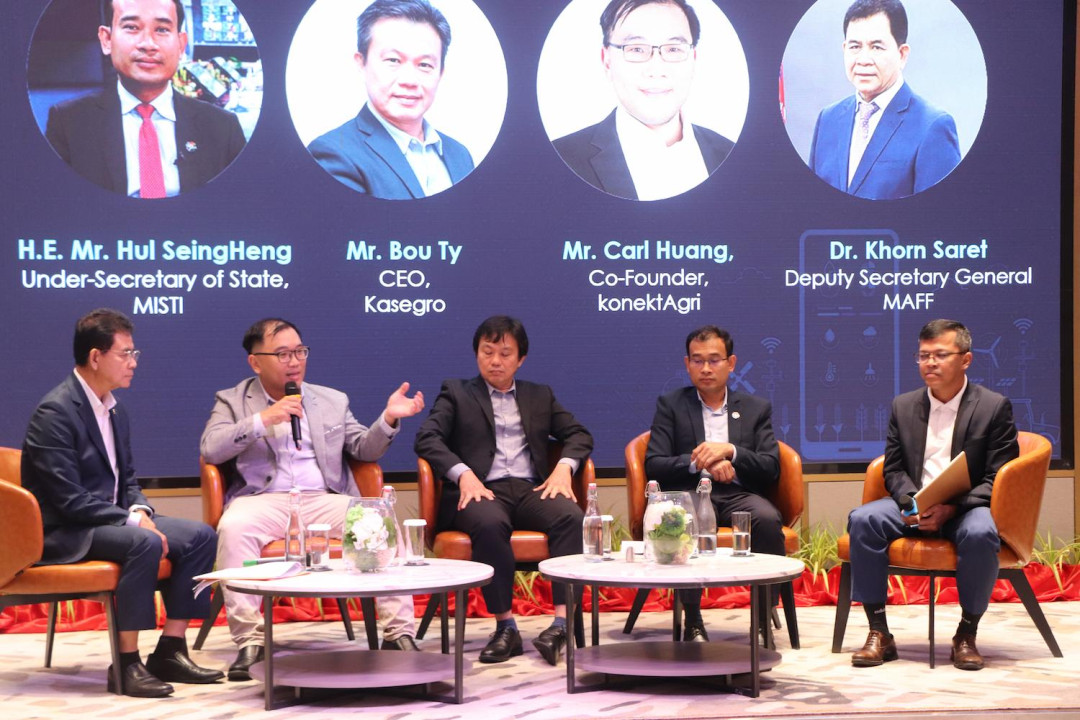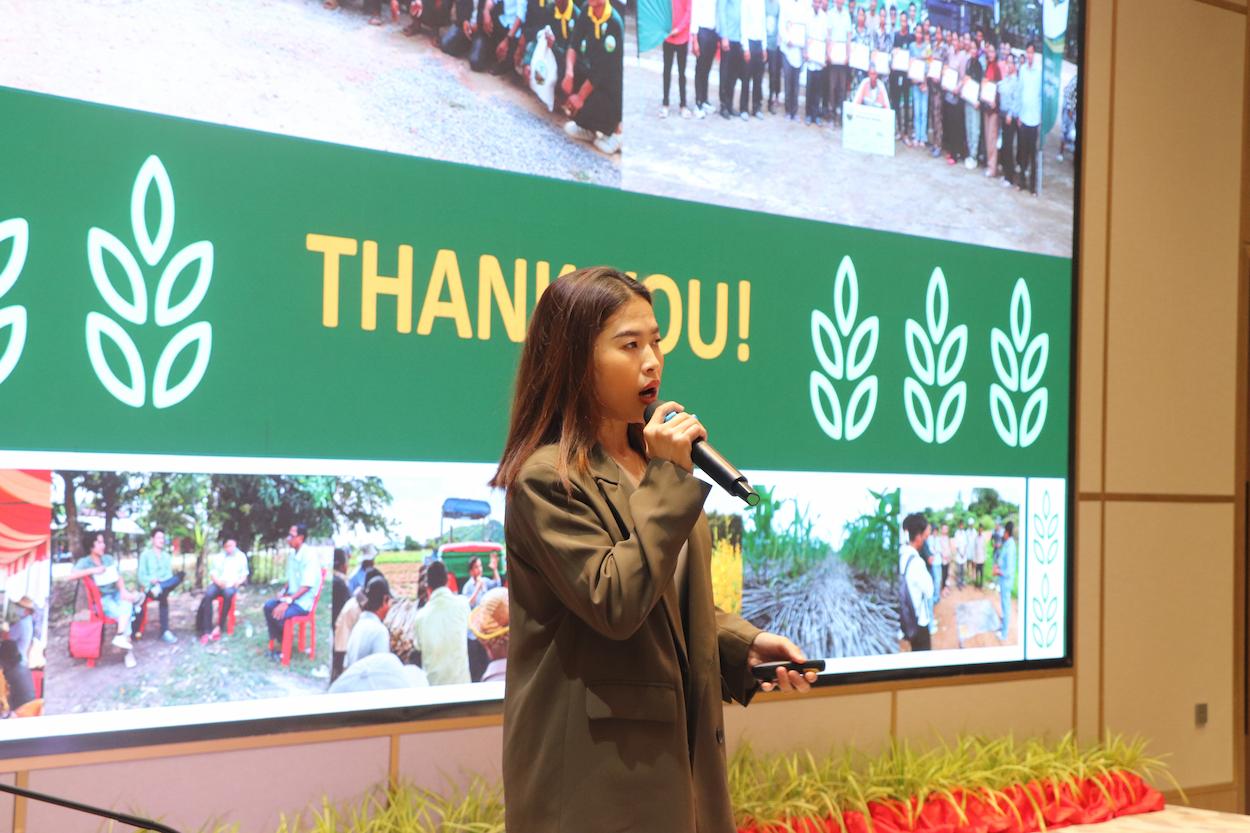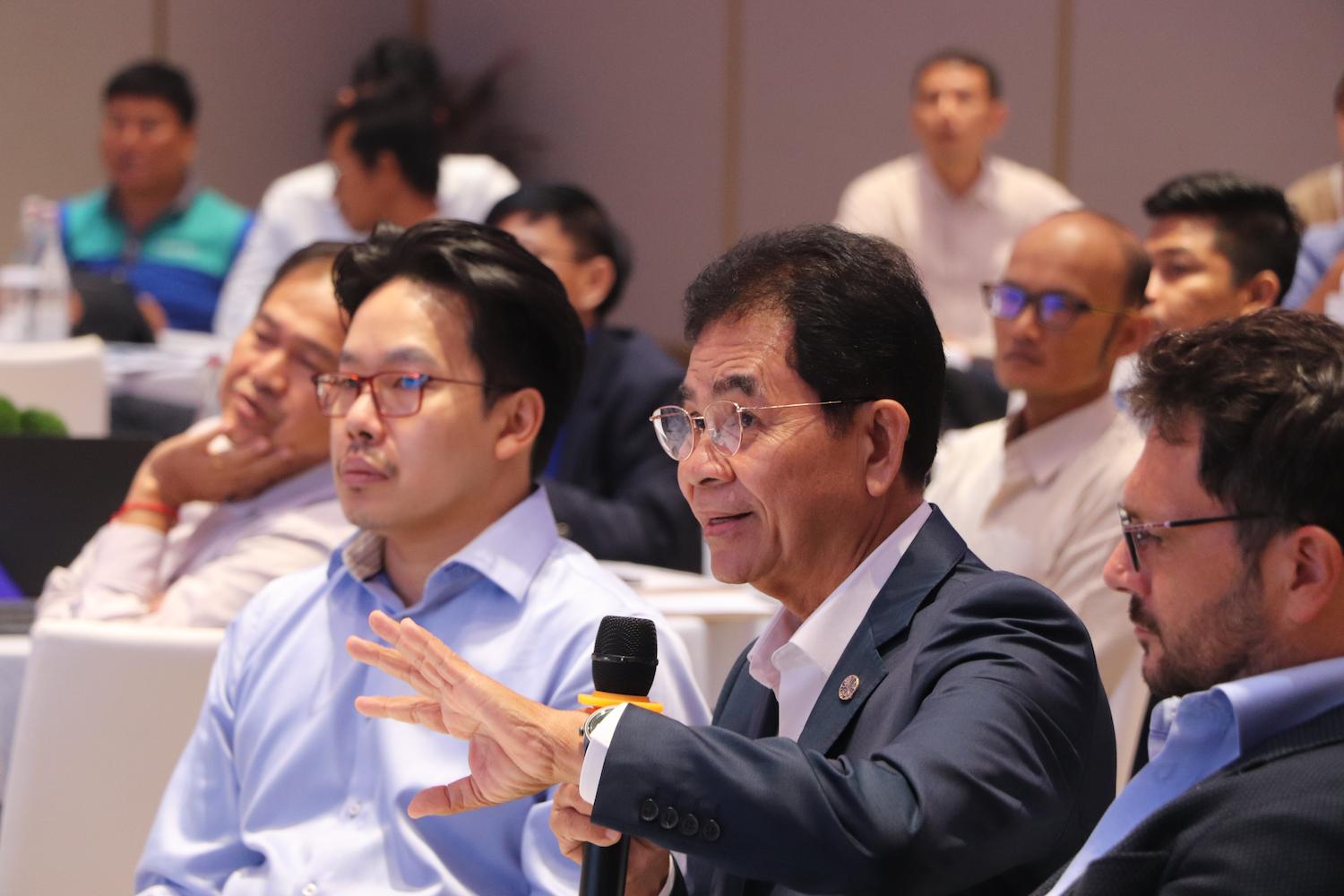Bridging Innovation and Implementation in Cambodia's Agri-Tech Landscape

At a recent Breakfast Talk on Agri-Tech hosted by EuroCham Cambodia on June 27, 2025, a panel of experts from the technology and agriculture sectors, as well as the government, gathered to explore the promises and challenges shaping Cambodia’s agricultural technology landscape.
The discussion highlighted three major barriers to agri-tech adoption in the country: limited access to reliable data, difficulties in technology adoption among farmers, and persistent infrastructure challenges.
The event opened with remarks from Okhna Sovithya Sothy, Chairman of EuroCham’s Agribusiness Committee and 8S Agro-Industry, who emphasised the strategic importance of innovation in agriculture to ensure long-term sustainability, productivity, and competitiveness.
Keynote presentations offered an overview of Cambodia’s agri-tech landscape, led by Setha Rath of Swisscontact’s Innovation for Sustainable Agriculture (ISA) project. She shared insights from Swisscontact’s ongoing Transition Financing (DeiMeas) initiative, which promotes a holistic approach to transforming smallholder farming toward regenerative agriculture.

Since 2020, the project has expanded to include 800 farmers, five companies, and more agricultural cooperatives. It has also introduced a blockchain-based traceability system involving six actors – from organic rice farmers to European consumers – aimed at strengthening supply chains and increasing farmer incomes.
Dr. Ly Rothana, director of research and development at the Cambodia Academy of Digital Technology (CADT), presented the Healthy Rice project, which uses artificial intelligence (AI) and voice-command technology to help farmers detect and manage rice diseases via a mobile app.
He also spoke about the Khmer ASR app developed by CADT to convert speech to text in Khmer, supporting students and researchers in collecting field data through farmer interviews.
The presentations were followed by a panel discussion featuring:
- H.E. Hul Seingheng – Undersecretary of State, Ministry of Industry, Science, Technology and Innovation (MISTI)
- Dr. Khorn Saret – Deputy Secretary-General, Ministry of Agriculture, Forestry and Fisheries (MAFF)
- Bou Ty – CEO, Kasegro
- Carl Huang – Co-Founder, konektAgri
The session was moderated by Kann Kunthy, COO of AMRU Rice. Panelists explored how Cambodia can integrate innovative technologies to modernise agriculture and improve productivity, efficiency, and sustainability.
Addressing the Digital Divide in Cambodian Agriculture
Cambodia’s agricultural sector stands at a critical crossroads. With 65 per cent of the population under age 35, the country has a unique opportunity to leapfrog traditional farming methods, said Kunthy. However, the path is filled with challenges.
Carl Huang of konektAgri added, “The younger generation doesn't want to work on farms, so they go to government factories... because basically, they barely earn USD 200-300 per hectare per year.”
Bou Ty of Kasegro also pointed out that many Cambodian farmers actually lose money when receiving funding.
“This is a big problem – why do they lose money? What I found is a supply-demand misalignment between farmers and consumers,” he said.
Ty explained that most farmers still rely on traditional methods, spending heavily on inputs but getting low yields. On the consumer side, many Cambodians don’t trust the safety of locally grown vegetables, contributing to low domestic demand.
Kasegro, a cloud-based smart farm management and traceability system, is working to change this. The company uses IoT devices, sensors, and AI to introduce farmers to smart farming methods aimed at reducing costs and improving yields. It also seeks to better match supply with demand through coordination between farmers and vendors, and enhance consumer trust by providing traceability for vegetables.
Key Barriers to Agri-Tech Adoption in Cambodia
The panel identified several critical challenges hindering the adoption of agri-tech in Cambodia. A significant lack of reliable agricultural data continues to limit effective planning and decision-making.
Many farmers also face difficulties using digital tools due to low levels of digital literacy. Language remains a barrier, as most agri-tech platforms are not available in Khmer. In addition, poor internet connectivity and limited digital infrastructure in rural areas further obstruct the integration of technology into farming practices.
Cambodian Government’s Vision for Agricultural Technology
H.E. Hul SeingHeng from MISTI outlined the government’s ambitious ‘Science Technology & Innovation (STI) Roadmap 2030’, which aims to allocate 1 per cent of the country’s GDP to technological innovation, and to create tech platforms connecting government, academia, and the private sector.
The ministry's goals include:
- Integrating technology across agricultural value chains
- Developing a business intelligence system
- Ensuring 70 per cent local food production by 2030
Bridging the Implementation Gap
Dr. Khorn Saret of the Ministry of Agriculture, Forestry and Fisheries emphasised the importance of gradual and inclusive progress.
“We are trying to promote ground-level solutions to make information easily accessible to farmers,” he stressed.
Panelists noted that the current wave of technological advancement tends to benefit young, tech-savvy individuals, large agricultural enterprises, and private-sector innovators. This means small-scale farmers, older agricultural workers, and rural communities with limited digital access could be at risk of getting left behind.
Despite these challenges, the panelists still expressed optimism.
“Technology can solve problems before they happen,” said Bou Ty, highlighting the potential of AI and smart farming tools to increase yields and improve profitability. Realising this vision, however, will require more than new gadgets – it will take sustained investment, targeted education, and a commitment to ensuring that no one is left behind.
